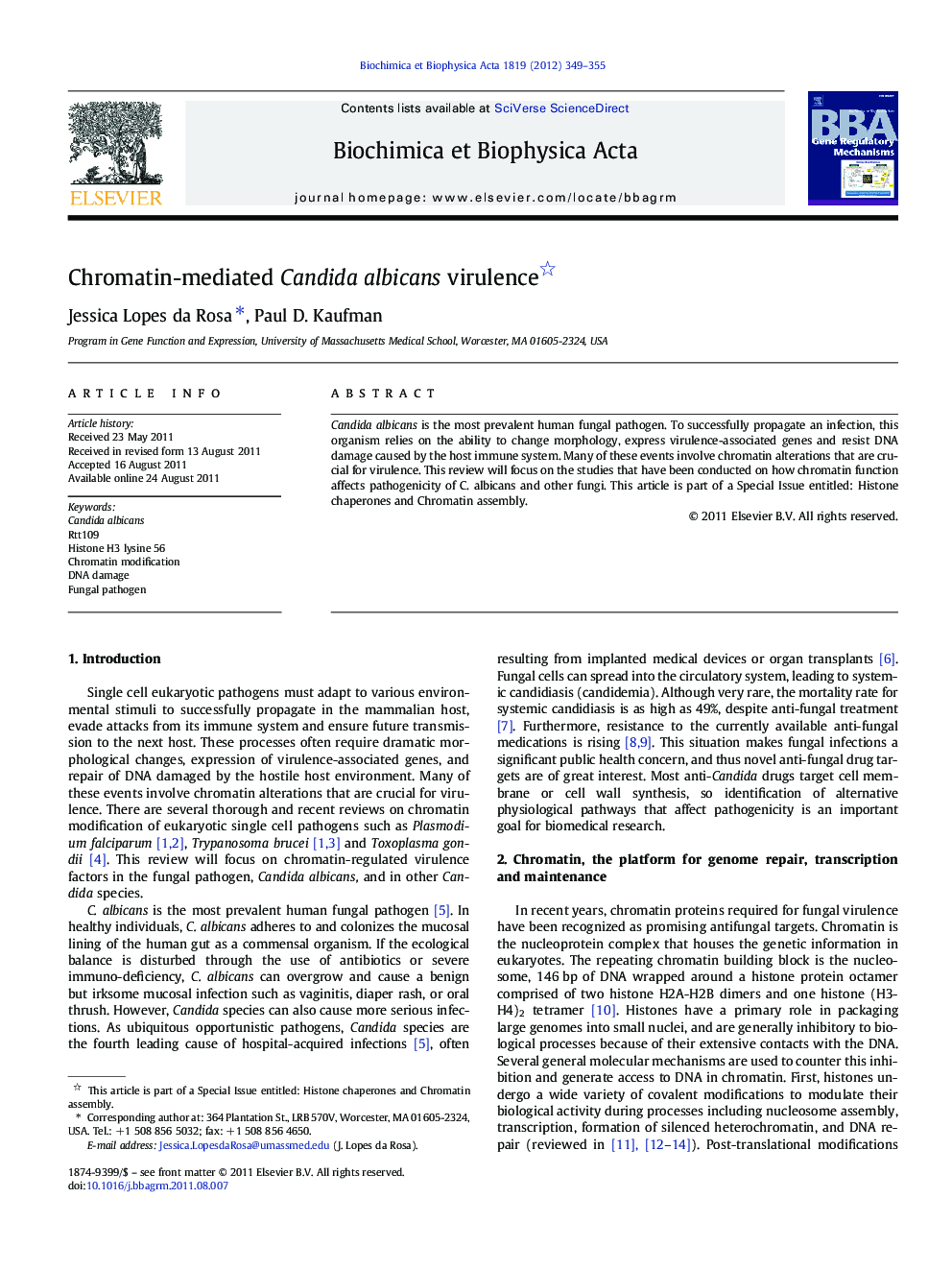| Article ID | Journal | Published Year | Pages | File Type |
|---|---|---|---|---|
| 1946540 | Biochimica et Biophysica Acta (BBA) - Gene Regulatory Mechanisms | 2012 | 7 Pages |
Candida albicans is the most prevalent human fungal pathogen. To successfully propagate an infection, this organism relies on the ability to change morphology, express virulence-associated genes and resist DNA damage caused by the host immune system. Many of these events involve chromatin alterations that are crucial for virulence. This review will focus on the studies that have been conducted on how chromatin function affects pathogenicity of C. albicans and other fungi. This article is part of a Special Issue entitled: Histone chaperones and Chromatin assembly.
► We review studies that address chromatin modifications and pathogenicity in Candida albicans. ► Resistance to DNA damage from reactive oxygen species is vital to C. albicans pathogenicity. ► We highlight RTT109 and H3K56 acetylation as major factors in promoting pathogenicity. ► Several other chromatin-regulating pathways are also critical for pathogenicity. ► We conclude that fungal-specific chromatin proteins should be targets for novel anti-fungal agents.
